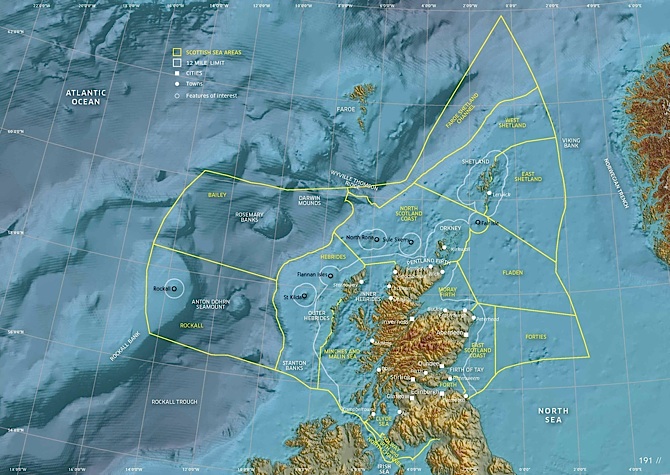Future of the Crown Estate in Scotland
 Today, the UK Government published its response to the final Report of the Scottish Affairs Committee’s Inquiry into the Crown Estate in Scotland. The SAC Inquiry was the most detailed evidence-based investigation into how the Crown Estate Commissioners (CEC) operate in Scotland and whether the property rights and interests that comprise the Crown Estate in Scotland should continue to be administered by that particular body.
Today, the UK Government published its response to the final Report of the Scottish Affairs Committee’s Inquiry into the Crown Estate in Scotland. The SAC Inquiry was the most detailed evidence-based investigation into how the Crown Estate Commissioners (CEC) operate in Scotland and whether the property rights and interests that comprise the Crown Estate in Scotland should continue to be administered by that particular body.
The report concluded that it should not and that the CEC’s responsibilities for administering the marine and ancient rights of the Crown in Scotland should be terminated and devolved and further decentralised.
The UK Government has rejected these recommendations and, instead, said that Scotland can look after wild oysters and mussels if it likes and that additional ancient assets to the 25 transferred at no consideration in 1999 (Edinburgh Castle etc.) could be considered – such as part of West Princes Street Gardens in Edinburgh(1). King’s Park in Stirling, however is off the agenda because Stirling Council have negotiated a purchase price! Presumably, had they not done so, King’s Park (Scotland’s ancient Royal Park), could also have been transferred.
What the report plays down (and the CEC has always conveniently ignored) is the fact that properties such as King’s Park and the seabed are already Scottish public land owned by the Crown in Scotland. The CEC and the UK Government argue that the Commissioners should continue to be the arbiter of the fate of such places as the administrators of Scottish public land and the CEC have published details of how they intend to respond here. Others, including the overwhelming majority of respondents to the Scottish Affairs Committee Inquiry take a different view.
Time for Plan B.
(Background material to the recent debate over the future of the Crown Estate can be found under “Hot Topics/Crown Estate”)
(1) Background to Princes Street Gardens can be found in Annex 8 of the Crown Estate Review Working Group report. My own transcript of the 1818 Agreement can be read here.
It’s important to keep in mind what the King’s Park actually is. The name implies it’s some sort of jewel in the heritage crown but, in fact, only about a fifth of it is actually a “park†– Gowan Hill and King’s Park. These are nice enough but not exactly on a par with Windsor Great Park as some have claimed. They’re also already leased to Stirling Council. I don’t know the rent or for how long (do you Andy?) but buying out the freehold might be sensible if that fits with SC’s financial strategy to capitalise ongoing liabilities.
The other four fifths of the KP is split roughly equally between some very boring flat farmland leased to a farmer and a golf course leased to Stirling GC (not being a golfer, I’m not qualified to comment on its merits). I can see why Stirling Council might want to buy a public park but it’s less obvious why they should want to buy farmland and a golf course when they can preserve such heritage value as this has (not to be exaggerated as already mentioned) by designating it as green belt – as in fact they already have. But if SC have been advised that the income stream represented by the rent paid by the farmer and the golf club is a sensible commercial investment, then fair enough.
But the Crown Estate can’t just give that income stream away. The other assets the CE have given away to the Scottish Government in the past (Linlithgow Palace etc.) have no income stream attached to them. They are pure heritage but a net liability on a day to day basis with ticket sales nowhere near matching the costs of maintenance. Hence it was a good deal for the CE to get the SG to take over these liabilities. It’s not the same with the King’s Park, though.